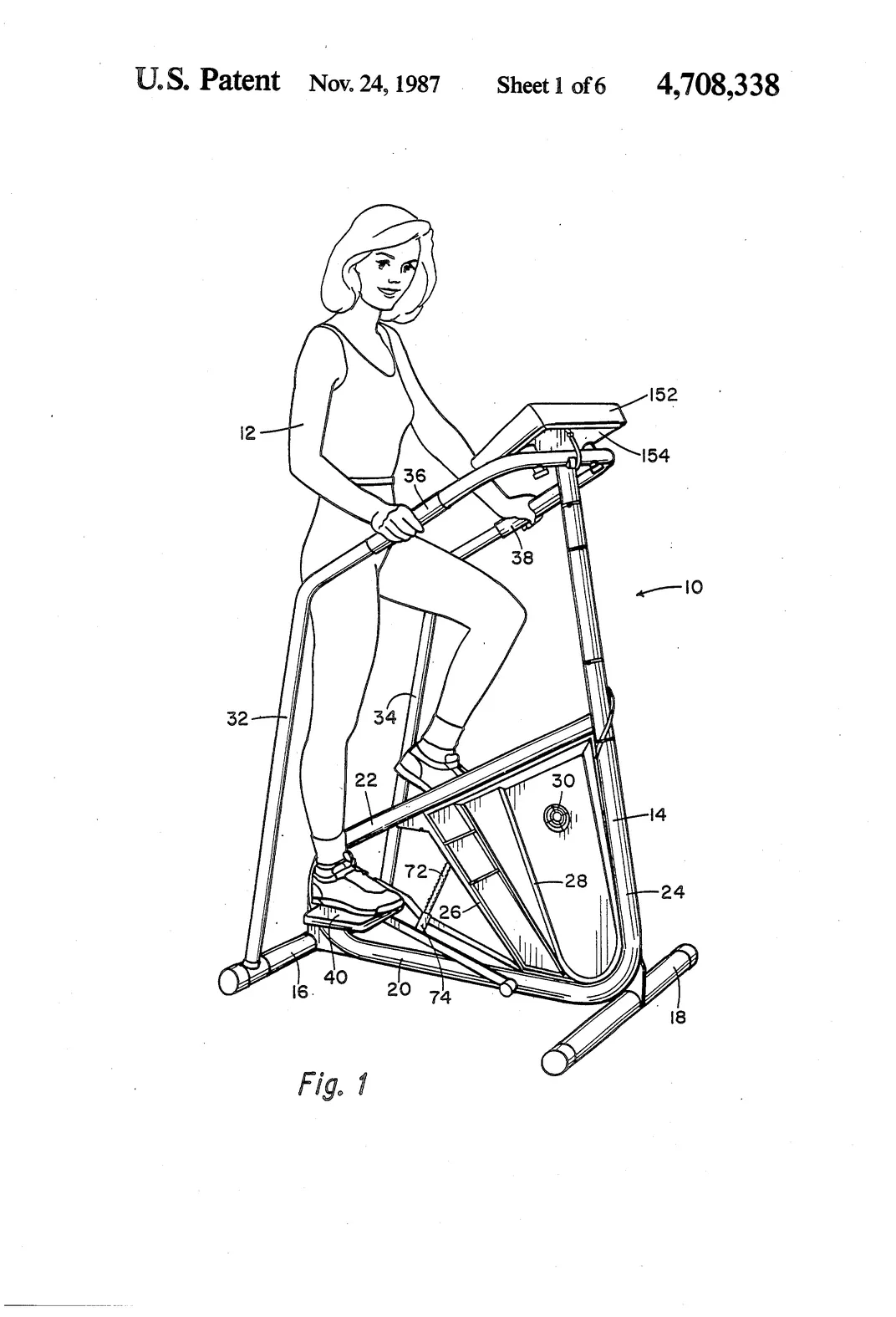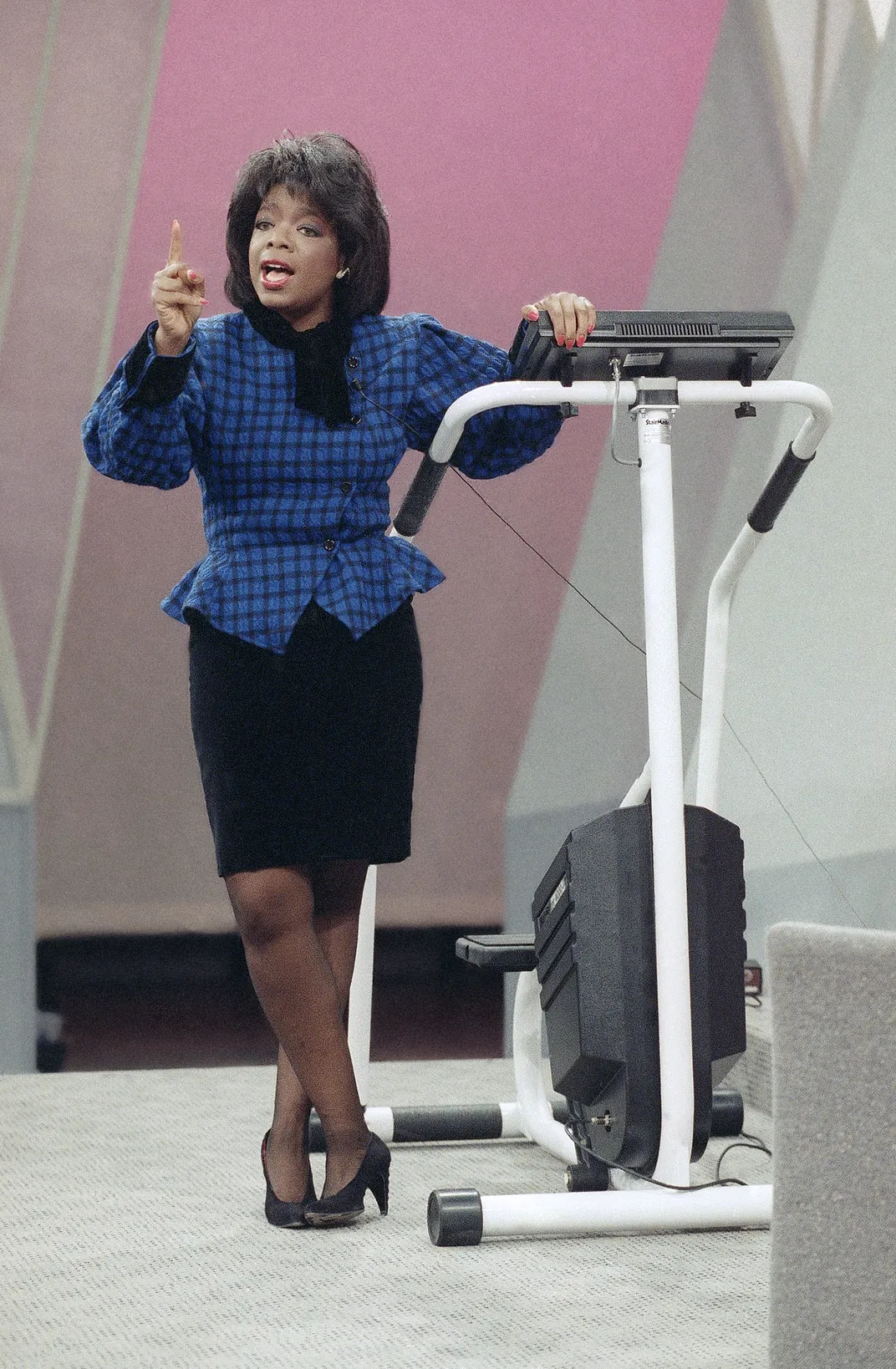The History of the StairMaster
The 1980s brought about America’s gym obsession—and a machine that demands a notoriously grueling cardio workout
:focal(777x548:778x549)/https://tf-cmsv2-smithsonianmag-media.s3.amazonaws.com/filer/b6/53/b6537a59-3c82-4089-9e27-920098f26197/stairmaster.jpg)
Like clockwork, every January Americans return to gyms and fitness studios across the country in rejuvenated numbers. Some are driven by a New Year’s resolution to get in shape; for others, it’s just another routine month in a culture that prizes physical fitness.
Among viral Peloton memes and ClassPass fundraising clamor, the StairMaster remains a quiet presence in most gyms. The machine, which features an infinite loop of stairs and demands a notoriously tough cardio workout, is as common as a treadmill or a stationary bike. But the StairMaster’s ubiquity belies a colorful history that skyrocketed it to fame during the 1980s.
The StairMaster was born during an oil crisis in Tulsa, Oklahoma. Jim Walker and George Schupp, a pair of entrepreneurs who owned a manufacturing company that primarily worked with clients in the energy industry, knew it was time to pivot their focus when oil prices peaked at $103.95 in 1980. The trouble was, they didn’t know where to go next. They were in the midst of exploring their options when, by chance, Walker bought a used car from a hobbyist inventor named Lanny Potts.
The trio forged a close relationship. Potts brought curiosity and creativity to their brainstorming sessions, while Walker and Schupp had the manufacturing know-how to puzzle out what it would take to bring a new product to market. As they explored the possibility of designing exercise equipment, Potts’ thoughts drifted back to his time in the Air Force—specifically, his memory of living in a walk-up apartment while stationed in Italy. The machine he proposed would replicate the taxing four-story climb, minus the joint-straining need to walk downstairs again.
By 1983, Potts, Walker and Schupp had founded a company called Tri-Tech and were ready to launch their first product. Originally dubbed the Ergometer 6000, the stepper was renamed the StairMaster 5000 by then-marketing director Ralph Cissne. The machine debuted at the National Sporting Goods Association (NSGA) trade show in Chicago, to attendees who worked in the country’s growing sporting goods industry. These potential buyers would have primarily worked in retail or wholesale—the first links in a long chain that would end in neighborhood gyms.
The following years brought new iterations. In March 1984, Tri-Tech released the StairMaster 6000—essentially the same design, but with the addition of a digital screen. Early advertisements for the StairMaster 6000, still bearing a “patent pending” disclaimer, emphasized the new machine’s digital benefits, such as readouts that showed the calories burned and audio tones that would ring when users climbed a virtual flight of stairs.

The company’s next chapter began with a patent application Potts filed in August 1986, describing a new machine called the StairMaster 4000 PT (short for Personal Trainer). This version replaced the machine’s escalator-like stairs (which made it, technically, a stepmill) for a pair of pedals that “simulate stair-climbing for a user.” Instead of climbing the rotating flight of stairs, StairMaster 4000 PT users could set the resistance level, then “climb” the pedals as if standing while pedaling a bike.
The StairMaster’s innovation lay in the stairs themselves: it was possible to adjust the height of the stairs individually. Instead of a one-size-fits-all approach, users could climb stairs spaced according to their height. The design even allowed users to safely set two different increments—a helpful feature for anyone whose stride isn’t perfectly even. Two days before Thanksgiving in 1987, the StairMaster 4000 PT’s patent was granted.
Tri-Tech’s decision to manufacture exercise equipment was far from random. In fact, Walker and Schupp’s decision to pivot to fitness was perfectly timed. Fitness “absolutely explode[d]” during the 1980s, according to Natalia Mehlman-Petrzela, a professor of history at the New School in New York City who is currently writing a book about the history of fitness culture. “Gym culture evolved from being a very strange subculture as late as the 1950s and even 1960s to being the ubiquitous cultural phenomenon that we see today,” says Mehlman-Petrzela. Though some people purchased StairMasters for personal use—particularly the 4000 PT, which was sleeker—the StairMaster’s rise to fame was inextricably intertwined with the boom in gyms and fitness clubs.
National survey data backs up Mehlman-Petrzela’s assessment. The same year the StairMaster 4000 PT received its patent, 69 percent of Americans self-reported regular exercise—up from just 24 percent in 1960. The International Health, Racquet & Sportsclub Association (IHRSA) began collecting consumer data in 1987, marking a new era for the fitness industry. Although the U.S. Census did not recognize the fitness industry until 1992, IHRSA data and contemporary reports suggest that approximately 17.3 million Americans belonged to gyms in 1987, compared to only 1.7 million in 1972.
Why the sudden spike in exercise? Historians say that gym-going was a response to a complex melange of cultural pressures. Mehlman-Petrzela cites several shifting cultural notions that gained purchase during the 1970s, one of the most important being widespread acceptance of the existence of a mind-body connection. This concept suggested that sweating on the StairMaster was not only physically rewarding, but mentally or emotionally enriching, too. According to Marc Stern, a history professor at Bentley University, fitness quickly became linked to corporate prestige and the aesthetics of beauty.
“In the 1980s, the gym gained a reputation of being a place to meet [people],” Stern says. Singles donned form-fitting Lycra, hoping to catch a potential date’s eye from across the room. An episode of Seinfeld that aired in 1993 reflects this commonplace voyeurism: “I usually last about ten minutes on a StairMaster,” Jerry Seinfeld says. “Unless, of course, there's someone stretching in front of me in a leotard. Then I can go an hour.”

The StairMaster had cameos in movies and picked up endorsements from celebrities. By 1990, Tom Cruise, Robert De Niro, Oprah and the entire cast of Three Men and a Baby had all publicly declared their love for the StairMaster. Later, athletes including the Knicks’ Patrick Ewing were known to incorporate the StairMaster into their training. “When you see the rich and famous exercising in a particular way or with a particular machine, that operates to make a product aspirational,” Mehlman-Petrzela says, “not necessarily just a program you do to lose weight or to get stronger.”
When the StairMaster was first introduced, Americans were experiencing declining health. As sedentary office jobs became more common, heart and lung disease spiked. Rates of cardiovascular disease rose steadily and peaked during the 1960s and 1970s. Meanwhile, health care was becoming more expensive; between 1973 and 1983, costs more than tripled. According to Mehlman-Petrzela, Americans of all political persuasions began to view fitness as a path toward seizing a sense of individual responsibility and empowerment.
The StairMaster entered the market as these forces reached their apex, and as gyms and fitness centers swept the nation. Though private gym memberships were pricey, it was still less expensive than assembling a home gym from scratch. A 1985 article published in the Washington Post described monthly fees ranging from $22 to $100, plus initiation fees that could cost as much as $650. Gyms and fitness clubs also granted access to high-end equipment, such as the StairMaster or weight circuit machines by Nautilus. By comparison, a single exercise machine could come with a price tag well into the thousands.
Back in the fall of 1983, Stern carefully weighed his decision to join an independently owned gym in East Setauket, New York, against his meager graduate student budget. The gym he ultimately joined had separate areas for cardio and weightlifting, booming disco music and a hot tub for mingling with fellow members. Trainers roamed the floor, monitoring exercisers and interjecting to provide guidance. Stern even tried the StairMaster a few times, then a new addition.
The experience was novel enough to spark Stern’s academic interest. He found himself contemplating the performances of strength playing out in gyms’ Panopticon-like mirrored rooms, musings that eventually became an academic paper. The StairMaster commanded attention, ensuring that users could see—and be seen. “The StairMaster is at the center of the gym,” Mehlman-Petrzela says. “It's a bit of an exhibitionist kind of machine.”
By the late 1980s, StairMasters had become a fixture in gyms across the country. In a 1989 New York Times “Metropolitan Diary,” a subscriber named Cynthia Arnold described her obsession with the new machine. “It allows you to climb tall buildings while trudging in place, a supposedly efficient form of exercise that doubles the torture in half the time,” she wrote. The statement, which could easily be mistaken for criticism, was meant as glowing praise. “Stairmaster, I love you!” Arnold concluded.
Arnold’s experience encapsulates what drew users to the StairMaster in droves. The machine was originally designed to reduce the physical strain of a cardio workout; users’ joints are dealt roughly half the impact of running. Yet the StairMaster gained a reputation for being particularly grueling. “The Stairmaster in some ways really embodies that kind of Sisyphean task,” Mehlman-Petrzela says, calling it a “stairway to nowhere.”
Still, the StairMaster’s rise to fame wasn’t without stumbles. By the end of the 1980s, the StairMaster was competing in an increasingly crowded market, and legal jostling ensued. In 1991, Tri-Tech sued—and was sued by—Tru-Trac Therapy Product, a rival stairclimber manufacturer, over alleged patent infringement. Just a few months later, two more stairclimber manufacturers, Laguna Tectrix and Pro-Form Fitness Products, tangled in a similar legal fight. At the time, stairclimbing machines claimed an approximately $320 million slice of the fitness market, and everyone wanted to secure their piece.
Sales of the StairMaster eventually declined. In 2001, the company filed for Chapter 11 bankruptcy and laid off employees in its Tulsa and Washington state locations. But that’s not the end of the StairMaster story.
“[T]he StairMaster name is ingrained in fitness-dom,” fitness and travel writer Therese Iknoian wrote at the time. “If the price is right, what company wouldn't want to own that piece of history and the steppers—still popular home equipment—that goes with it?”
That company turned out to be Nautilus, Inc.—and business rebounded. By 2007, the StairMaster “hit sales volumes they haven't reached in more than a decade,” according to a report published in Tulsa World. The company predicted that it would sell 7,000 StairMaster machines that year. "I don't think it'll slow down any time soon," plant manager Rob Myers told a reporter.
In 2009, StairMaster was acquired by Michael Bruno, who was then operating Land America. That same year, Bruno created Core Health and Fitness, which today owns a collection of fitness brands including Schwinn, Nautilus, Star Trac and Throwdown. In 2012, the company unveiled a refreshed version of the TreadClimber, a treadmill-stepclimber hybrid originally sold by Nautilus, followed by a new version of the StairMaster (called the Gauntlet) in 2014.
In 2017, the National Fitness Trade Journal ran a cover story that repositioned the StairMaster as an effective way to deliver a trendy high intensity interval training (HIIT) workout. “With StairMaster HIIT, club owners can create a new revenue stream while tapping into a massive growing market,” the article suggested, promising that the StairMaster would leave members “hurting for more.” To sweeten the deal, StairMaster provided HIIT resources for trainers, suggesting ways to include its machines in larger HIIT programs.
Now, nearly four decades into its history, the StairMaster is facing new competition from smart mirrors and spin classes, barre and bootcamp. Despite all the fitness trends that may challenge its legacy, its staying power lies in its simplicity.
Its truly basic name says it all.
“[It] implies total mastery of something that should be normal,” Stern says. “You're gonna climb some stairs."
/https://tf-cmsv2-smithsonianmag-media.s3.amazonaws.com/accounts/headshot/michelle.png)


/https://tf-cmsv2-smithsonianmag-media.s3.amazonaws.com/accounts/headshot/michelle.png)